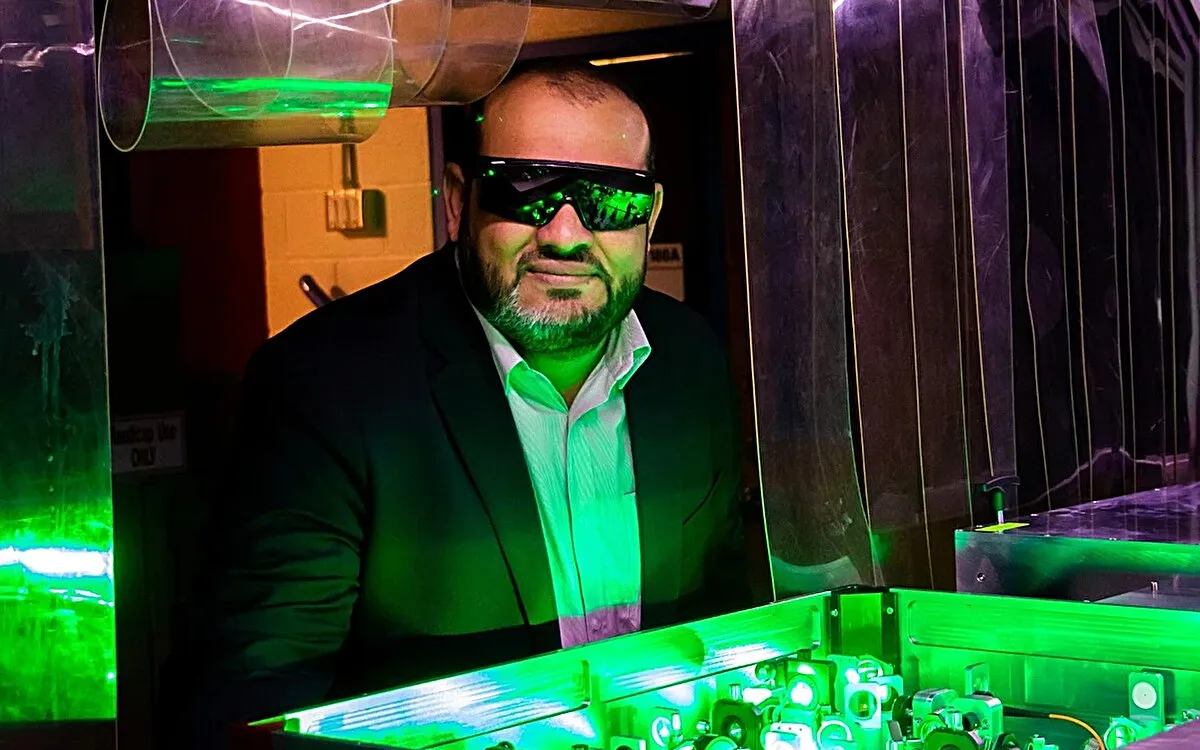
Researchers from the University of Arizona, in collaboration with an international team, have made a groundbreaking discovery in the field of quantum physics by successfully capturing and controlling quantum uncertainty in real time using ultrafast pulses of light. This significant advancement, detailed in the journal Light: Science & Applications, has the potential to revolutionize secure communication systems and pave the way for the development of ultrafast quantum optics.
At the center of this innovative research is the concept of squeezed light, explained by Mohammed Hassan, the paper's corresponding author and an associate professor of physics and optical sciences. In quantum physics, light is defined by two interconnected properties—position and intensity—that cannot be precisely measured simultaneously, a principle known as quantum uncertainty. The relationship between these properties can be likened to a balloon; while ordinary light resembles a round balloon with evenly distributed uncertainty, squeezed light takes on an oval shape, allowing one property to become more precise while the other becomes noisier.
This technique of squeezed light has already found real-world applications, such as in gravitational-wave detectors, which utilize it to minimize background noise and detect faint ripples in spacetime caused by distant celestial events. Traditionally, implementations of squeezed light relied on laser pulses lasting milliseconds. However, Hassan sought to investigate whether it was possible to generate squeezed light using ultrafast pulses that are measured in femtoseconds (one quadrillionth of a second). Achieving this would mark a revolutionary advancement, merging the fields of quantum optics and ultrafast science.
The primary challenge encountered in this research was achieving phase-matching between lasers of different colors, a process that typically necessitates complex setups. Hassan's insight led to the development of a novel method for producing extremely short bursts of light through a phenomenon known as four-wave mixing, where various light sources interact and combine.
Building upon his previous work with ultrafast pulses, Hassan and his team divided a laser beam into three identical beams and directed them into fused silica, successfully producing ultrafast squeezed light. Unlike earlier methods that focused on reducing uncertainty in a photon's phase, Hassan’s team concentrated on squeezing a photon's intensity. By adjusting the position of the silica relative to the split laser beam, they demonstrated the ability to fluctuate between intensity and phase squeezing, marking the first-ever real-time measurement and control of quantum uncertainty.
The implications of this research extend into the realm of secure communications. While both ultrafast light and squeezed light have been utilized separately for transmitting binary data, their combination significantly enhances both speed and security. If data transmitted with quantum light is intercepted, the network will detect the intrusion immediately. However, the intruder may still acquire some information through a decoding key.
Hassan explains that with their method, an eavesdropper not only disrupts the quantum state but must also know both the key and the precise pulse amplitude. This disturbance affects the amplitude squeezing, rendering any decoded data inaccurate, thereby significantly enhancing security in quantum communications.
Beyond secure communications, Mohammed Hassan envisions that ultrafast quantum light will advance various fields, including quantum sensing, chemistry, and biology. This could lead to improved diagnostics, novel drug discovery techniques, and highly sensitive detectors for environmental monitoring.
Hassan collaborated with Mohamed Sennary, a graduate student specializing in optics and physics and the paper's first author; Mohammed ElKabbash, assistant professor of optical science; and partners from the Barcelona Institute of Science and Technology, Ludwig Maximilian University of Munich, and the Catalan Institution for Research and Advanced Studies. Their collective efforts have not only broadened the understanding of quantum optics but also opened doors to new technological advancements that could shape the future of multiple scientific disciplines.